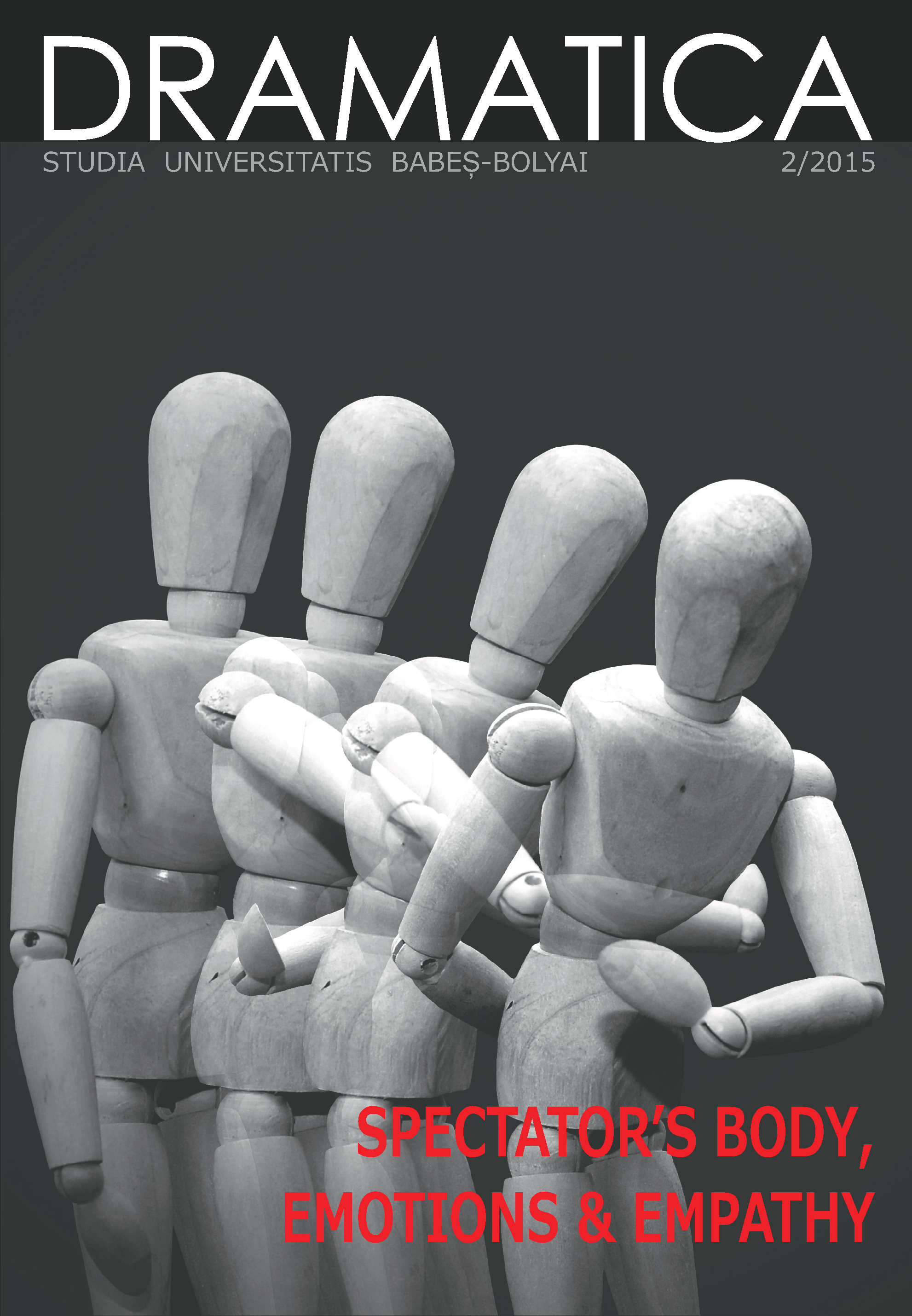“Why won’t you help me … shave my head?” Critical autoethnography and understanding affective response to an act of critical vulnerability in solo performance
Keywords:
autoethnography, solo performance, vulnerability, domestic violence, affect, performativityAbstract
In my current arts-based research practice, I explore the aesthetics of critical vulnerability as it relates to my solo performance “How not to Make Love to a Woman,” a critical autoethnography and solo performance piece about leaving an abusive marriage. The initial research question revolved around an examination of how aesthetic choices contribute to affective responses. As the performance and the research both transformed,I became less interested in aesthetic choices and more about descriptive accounts of what occurs between spectator and performer in the moment of critical intimacy where the audience is invited to shave the performer’s head. Through this examination I have come to understand some of the ways the affective spectator responses to these moments of spectator-performer interactions can result in the kinds of subtle attitudinal shifts that contribute to increased possibilities for community dialogue about the subject of domestic violence.
References
AHMED, Sara. The Cultural Politics of Emotion. New York: Routledge, 2004. Print.
-Queer Phenomenology: Orientations, Objects, Others. Durham: Duke UP, 2006. Kindle.
-The Vulnerable Observer: Anthropology That Breaks Your Heart. Boston: Beacon Press, 1996. Print.
BEHAR, Ruth and Deborah A. Gordon, eds. Women Writing Culture. Berkeley, UC Press, 1995. Print.
BOWLES, Norma and Daniel-Raymond Nadon, Eds. Staging Social Justice: Collaborating to Create Activist Theatre. Carbondale: Southern Illinois UP, 2013. Kindle.
CARLSON, Marvin. Performance: a Critical Introduction. 1996. 2nd Ed. New York: Routledge, 2004. Print.
CONQUERGOOD, Dwight. Cultural Struggles: Performance, Ethnography, Praxis. Ed. E. Patrick Johnson. Ann Arbor: U Michigan Press, 2013. Print.
DANIEL, Yvonne. Dancing Wisdom: Embodied Knowledge in Haitian Vodou, Cuban Yoruba, and Bahian Candomblé. Urbana: U of Illinois P, 2005.
-The History of Sexuality: An Introduction: Volume 1. 1976. Trans. Robert Hurley. 1978. New York: Random House, 1990. Print.
-The Use of Pleasure: Volume 2 of the History of Sexuality. 1984. Trans. Robert Hurley. New York: Random House, 1985. Kindle.
FREIRE, Paulo. Pedagogy of the Oppressed, 30th Anniversary Edition. 1975 Trans. Ramos, Myra Bergman. New York: Continuum, 2005. Print.
GOFFMAN, Erving. The Presentation of Self in Everyday Life. Edinburgh: U of Edinburgh Social Sciences Research Center, 1956.
-Frame Analysis: An Essay on the Organization of Experience. 1974. Boston: Northeastern U Press, 1986. Web.
GOLDSTEIN, Sarah. “PSi conference challenges audience’s level of comfort.” Brown Daily Herald. [Providence, RI] 5 April 2005: np. Web.
HAUTZINGER, Sarah J. Violence in the City of Women: Police and Batterers in Bahia, Brazil. Berkeley: UC Press, 2007. Print.
HELGUERA, Pablo. Education for Socially Engaged Art: A Materials and Techniques Handbook. New York: Jorge Pinto Books, 2011.
LEAVY, Patricia. Method Meets Art: Art-Based Research Practice. New York: Guilford Press, 2009. Print.
MARTINEZ, Jacqueline M. Communicative Sexualities: A Communicology of Sexual Experience. Lanham: Lexington Books, 2011. Kindle.
SEDGWICK, Eve Kosofsky. Touching Feeling: Affect, Pedagogy, Performativity. Durham: Duke UP, 2003. Kindle.
SONTAG, Susan. Regarding the Pain of Others. New York: Picador, 2003. Print.
TURNER, Victor. From Ritual to Theatre: The Human Seriousness of Play. New York: PAJ Publications, 1982. Print.
Downloads
Published
How to Cite
Issue
Section
License
Copyright (c) 2015 Studia Universitatis Babeș-Bolyai Dramatica

This work is licensed under a Creative Commons Attribution-NonCommercial-NoDerivatives 4.0 International License.


